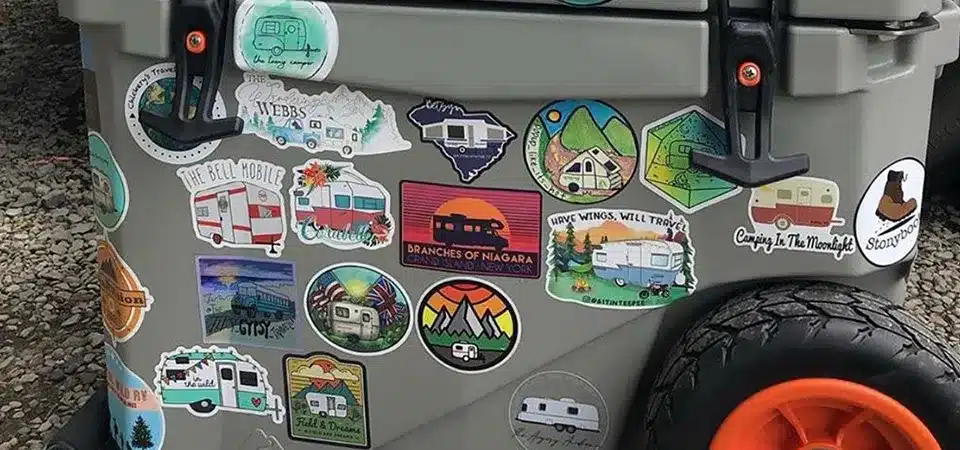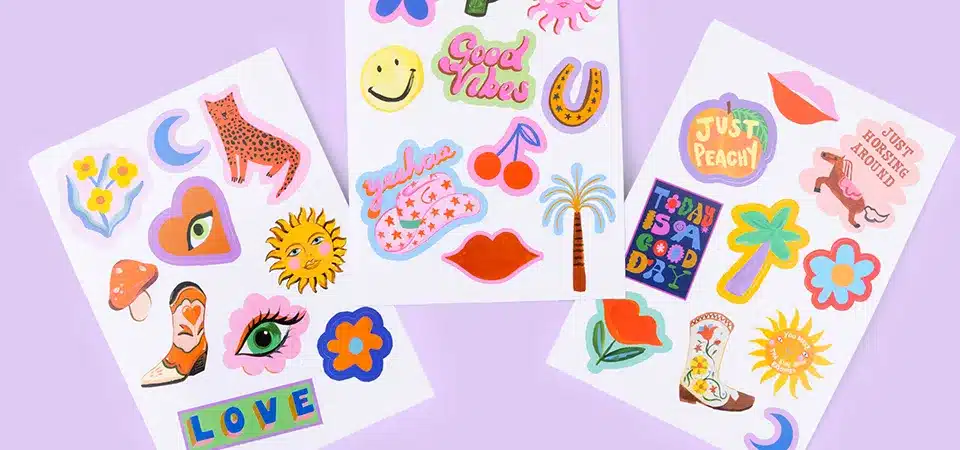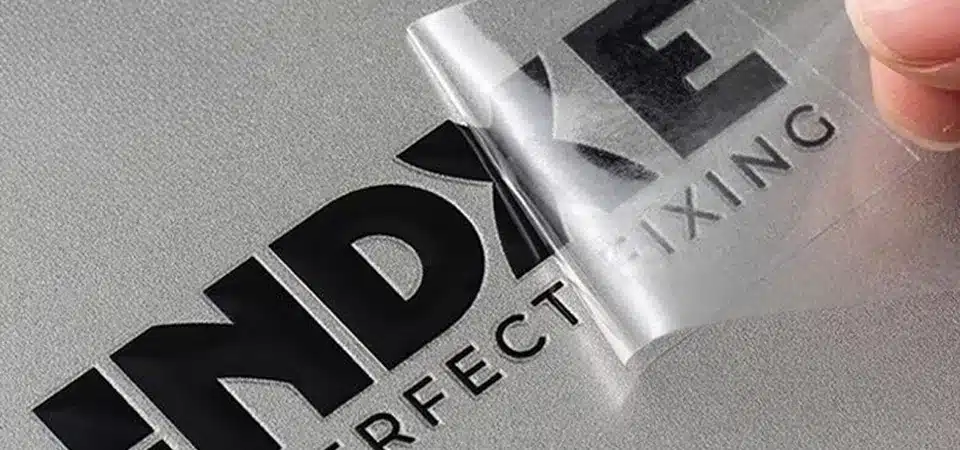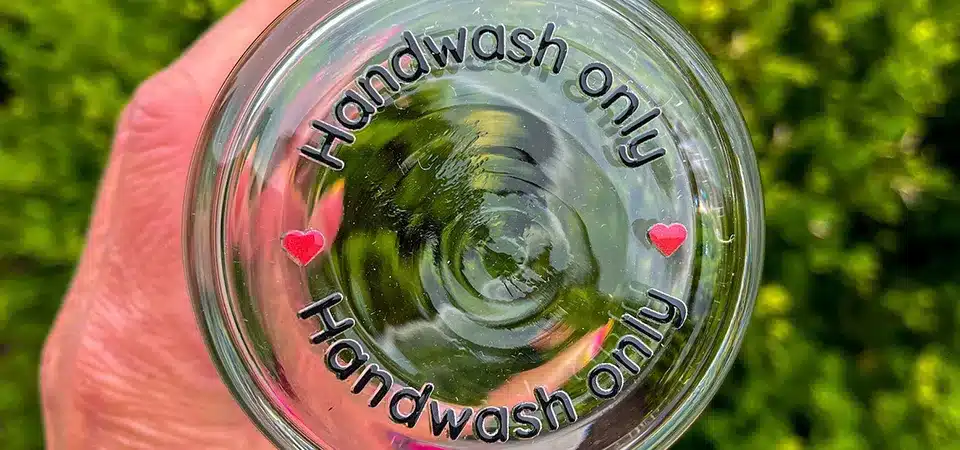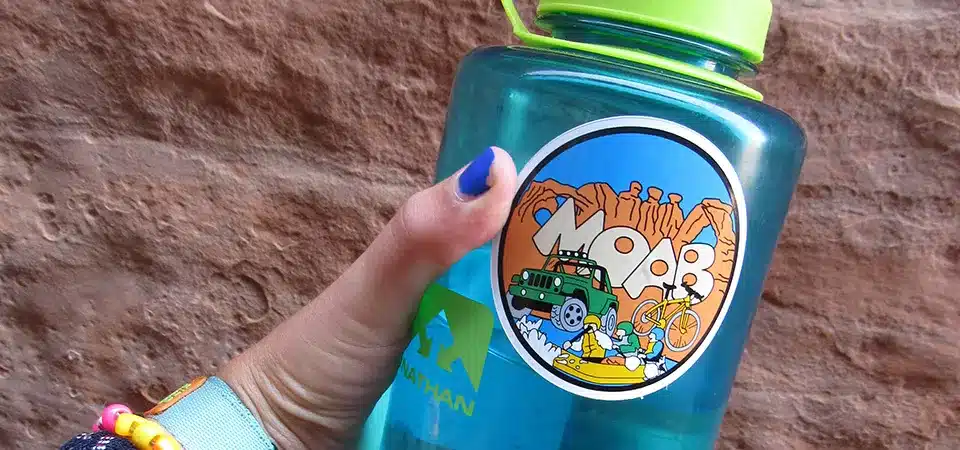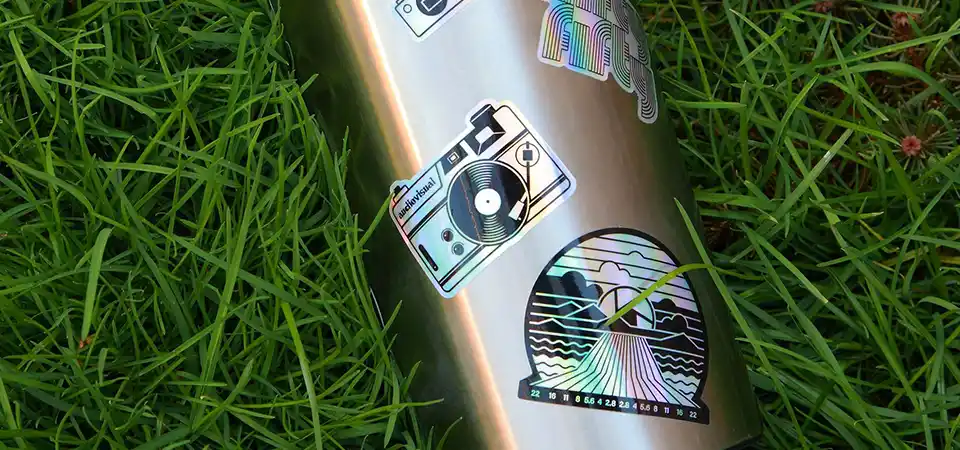You want to be eco-conscious, but you're unsure about that sticker on your package. Tossing it in the recycling bin feels right, but you have a nagging doubt it could cause problems.
No, most stickers are not recyclable. They are made from a mix of materials like plastic, paper, adhesive, and ink that cannot be separated in standard recycling facilities. They are considered a contaminant in the recycling stream.
As a sticker industry professional, I see this question come up all the time. Brands want to be sustainable, and customers want to do the right thing. The truth is, the very things that make a sticker great—its durability, stickiness, and vibrant look—are what make it so difficult to recycle. Let's break down exactly why this is and what your best options are.
Why are stickers difficult to recycle?
You toss a sticker-covered item in the recycling bin, hoping for the best. But you might be contaminating the entire batch, doing more harm than good without even knowing it.
Stickers are difficult to recycle because they are composite items. The layers of plastic film or coated paper, adhesive, and ink create a material "sandwich" that standard paper and plastic recycling equipment cannot process and separate.
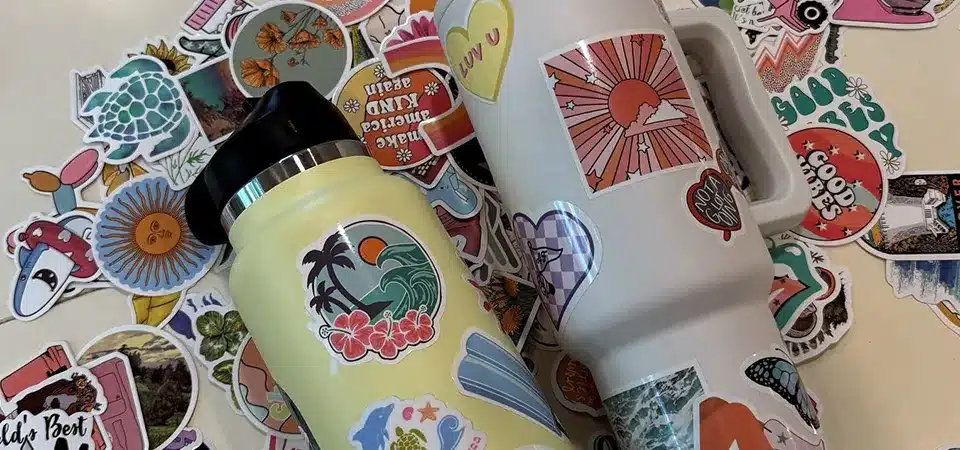
In my print shop, we choose materials based on performance. A sticker needs to stick, resist water, and not fade. Unfortunately, this means combining materials that don't play well together at a recycling plant. Think of it as trying to recycle a hamburger. You can't just throw the whole thing into the paper bin or the plastics bin.
The Material Sandwich
A typical sticker is made of multiple layers:
- Face Stock: The main material, often a plastic like vinyl (PVC) or polypropylene (BOPP). Even paper stickers usually have a thin plastic coating for protection.
- Ink: The printed design itself.
- Adhesive: The sticky layer, which is usually a strong, pressure-sensitive glue that doesn't break down easily.
- Release Liner: The silicone-coated backing paper that you peel off.
The Contamination Problem
When these layers enter a recycling stream, they cause problems. At a paper mill, the plastic face stock and sticky adhesive won't turn into pulp. They gum up the machinery and contaminate the finished paper. At a plastics recycling facility, the paper fibers and adhesive are considered contaminants. The systems are designed for clean streams of a single material, and stickers are the opposite of that.
What are stickers made of (and why that matters)?
A sticker might just look like a piece of shiny paper. But the unseen layers underneath—the adhesive and chemical coatings—are what make recycling a nightmare for processing facilities.
Most durable stickers are made of Polyvinyl Chloride (PVC) or Polypropylene (BOPP) plastic. They use a strong acrylic adhesive and a silicone-coated paper backing. These materials are chosen for performance, not for their ability to be recycled.
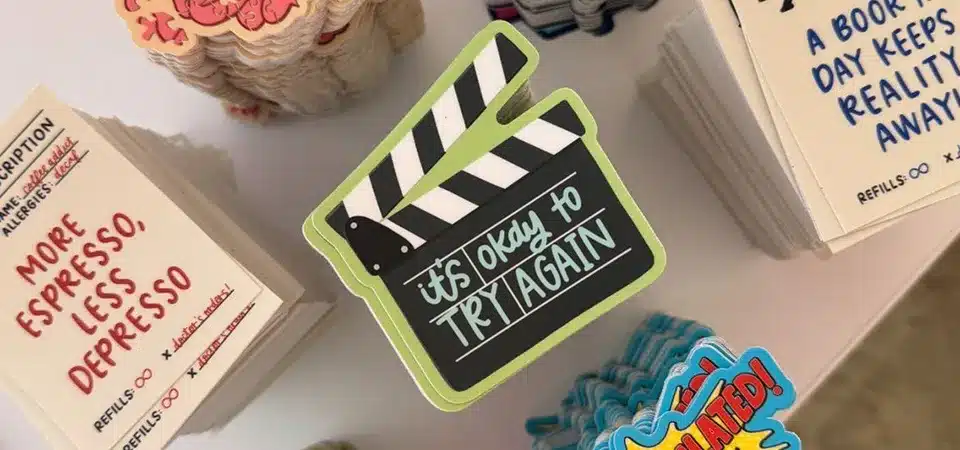
We stock big rolls of these materials in my factory, and each one has a specific job. Understanding them is key to understanding the recycling challenge. The materials are great for creating a sticker that lasts, but they are a real headache when it comes to disposal. Here is a simple breakdown of a sticker's parts and why they cause issues.
| Sticker Component | Common Material | Why It's a Recycling Problem |
|---|---|---|
| Face Stock | Vinyl (PVC), BOPP, PET | These plastics contaminate the paper recycling stream. |
| Adhesive | Acrylic-based glue | It does not dissolve and gums up recycling equipment, causing clogs. |
| Release Liner | Silicone-coated paper | The silicone coating cannot be separated from the paper fiber. |
The release liner, or sticker backing sheet, is the piece you peel off and throw away. It feels like paper, but the slick, non-stick surface comes from a layer of silicone. This coating makes it impossible to recycle with regular paper because the silicone cannot be broken down in the pulping process. It's instantly destined for the landfill.
Are any stickers recyclable?
You want to make an eco-friendly choice when buying or printing stickers. But with so many confusing claims, you're not sure if a truly recyclable option even exists.
Yes, but they are rare and have limitations. Truly recyclable stickers are made from 100% uncoated paper with a special recyclable-compatible adhesive. These are designed to break down cleanly in the paper pulping process.
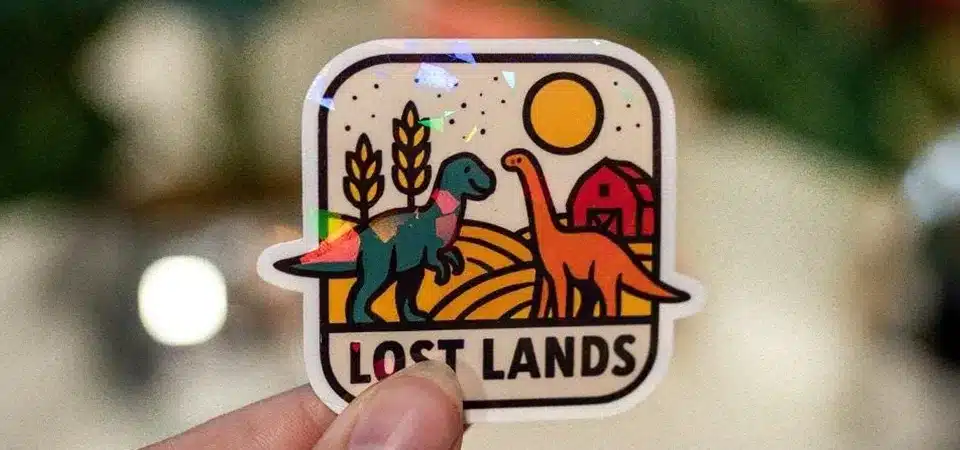
When a client asks me for a "green" sticker, this is the direction I point them in. But it comes with trade-offs. These stickers are not waterproof, not very durable, and can tear easily. They are great for short-term indoor use, like on a paper bag or a cardboard box that will be recycled soon.
Paper-Based Stickers
The key is that the face stock must be simple, uncoated paper. If it has a glossy finish, it likely has a plastic laminate on top, which makes it non-recyclable again. You need a raw paper finish that can be turned back into pulp easily.
Recyclable-Compatible Adhesives
This is the other critical piece. Some adhesive manufacturers have developed glues that are designed to be screened out during the pulping process. The adhesive dissolves and washes away without sticking to the machinery or contaminating the new paper. Finding stickers that use both uncoated paper and these special adhesives is the only way to get a genuinely recyclable sticker. They are not the standard, so you often have to seek them out specifically.
What about compostable stickers?
"Compostable" sounds like the perfect green solution for stickers. But throwing them in your backyard compost pile often won't work and can contaminate your soil with plastic.
Most compostable stickers require industrial composting facilities with high heat and specific microbes to break down. They will not decompose in a home compost bin and must be kept out of the recycling stream.
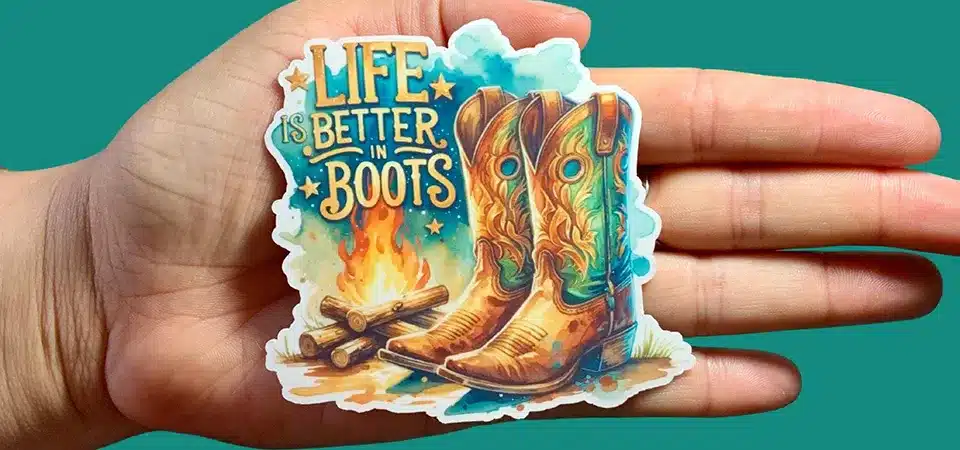
I've had many well-meaning clients ask for compostable stickers, thinking it's the easiest eco-friendly answer. It's a great technology, but the disposal is the tricky part. The reality is that most people don't have access to the right facility to process them.
Home vs. Industrial Composting
Your backyard compost bin is great for fruit peels and leaves, but it doesn't get hot enough to break down bioplastics like PLA, which are often used in compostable stickers. These stickers need to reach temperatures of over 130°F (55°C) in a facility where they are managed carefully. If they end up in a landfill, they create methane, a potent greenhouse gas. If they end up in your home compost, they will just sit there for years, like a regular plastic sticker.
Look for Certification
If you do choose compostable stickers, look for certifications like BPI (Biodegradable Products Institute) in North America or TUV Austria's 'OK compost HOME' or 'OK compost INDUSTRIAL' seals. This confirms they've been tested. But remember, certification doesn't solve the problem of access. You still need a way to get the sticker to the right facility.
What should I do with stickers and sticker-covered items?
You know you can't just toss stickers in the recycling. So what is the best thing to do with sticker-covered packaging, old sticker backings, and the stickers themselves?
For items with small stickers on them, like cardboard boxes, recycle them as usual. For the stickers themselves and their backing sheets, the best option is creative reuse or, ultimately, the landfill.
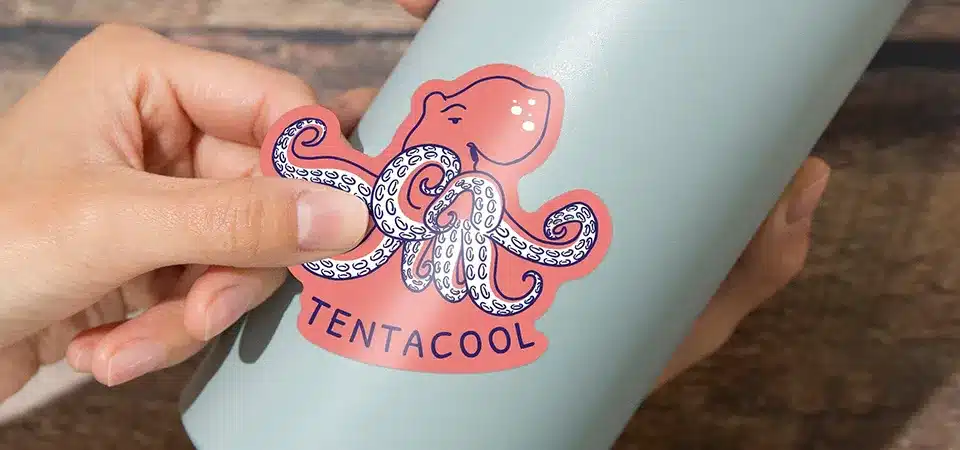
This is where we can be practical and creative. The goal of recycling is to reduce waste, and we can achieve that through other means.
What to Do Instead
- Reuse Them: The most sustainable option is to use a sticker for its entire life. Decorate your journal, laptop, water bottle, or phone case. Turn them into art projects or collages.
- Correct Disposal: If you have to dispose of a sticker or a sheet of sticker backing, it belongs in the trash, not the recycling or compost.
- Leave Them On: For items like cardboard boxes, glass jars, or plastic bottles that have paper labels on them, you can generally leave the label on. The recycling process is designed to filter out these small contaminants.
FAQs
Can stickers on cardboard boxes be recycled together?
Yes. Paper recycling mills have a pulping process that is designed to separate small amounts of non-paper items like ink, tape, and paper labels. The adhesive and sticker material get screened out.
Are sticker backing sheets recyclable or reusable?
No, they are not recyclable. The silicone coating on the slick side of the backing paper makes it a contaminant in the paper stream. They can, however, be reused for kids' crafts as a non-stick surface for painting or playing with new stickers.
Do stickers made with plastic resin impact recyclability?
Yes, absolutely. A plastic or vinyl sticker placed on a recyclable paper or cardboard item is a contaminant. While small paper labels are acceptable, a large vinyl sticker can cause enough contamination to get the entire item rejected at the sorting facility.
Can I recycle envelopes with address labels on them?
Yes. Just like with cardboard boxes, the recycling system is set up to handle small paper address labels and the plastic windows on envelopes. You do not need to remove them.
What should I do with small stickers that are hard to remove?
Leave them on the item. Trying to scrape a sticker off a recyclable container, especially a plastic one, can damage the item. It's better to leave the small sticker on and let the recycling facility's screening process handle it.
Conclusion
Most stickers can't be recycled. The best approach is to recycle items with small labels attached, creatively reuse the stickers you love, and dispose of backings and old stickers in the trash.

